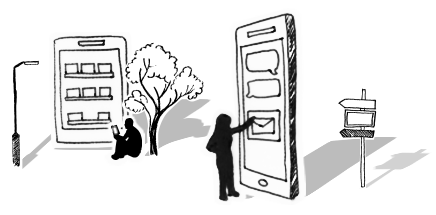




Change Management Tips – Building the User Journey
You may have heard the term ‘change journey’ before. This describes the phase that an organisation will go through in making complex organisational, process and behavioural change.
Why describe this as a journey?
Whatever happens within the organisation – technical changes, new operating models, new systems and ways of working, it’s unlikely to be a straightforward move from A to B. Many things will occur during the timeframe that will affect the transition, meaning the pace of change and resistance to it will vary – and things can be pretty unpredictable.
So why not apply the same principle to the people experiencing the change? For employees to successfully change the way they work, they need to be supported in many ways. This could involve classroom or online learning, support from managers or peers, regular communications or opportunities to share ideas. Whatever these tactics are, they will need to be many and varied to be successful, and they should be staggered over time; designed to continually engage without being overpowering.
People going through change are essentially going on a voyage of discovery, and to help them navigate it there are a number of principles that you can apply to ensure they reach the desired outcomes.
1. Set foundations
Clarify the need for change, and be open and honest about it. This may involve sharing bad news or information which might make people feel uncomfortable about the present state of the nation, but this will help them come to terms about the need to do something differently. This is best coming from the leaders of the organisation – seeing them being open and transparent about change can really help get them onboard.
The outcome here is a universal, company-wide understanding of the rationale for change.
2. Create a ‘pull’
Develop a curiosity among your employees. Show them what the change might mean for them – and do it creatively. Try animations or video to bring the new way of working to life, and enhance this with roadshows so people can share their thoughts, concerns or ideas.
The outcome here is that people become interested and want to know more.
3. Develop capability
Understand the skills that people will need to thrive. Drip feed it through the organisation using innovative new ways of sharing information – theory is great, but bring it to life using real life scenarios. Think about a variety of media such as animation, infographics, live presentations and role plays – it doesn’t always have to be elearning alone.
The outcome is that people are aware of what they need to do differently.
4. Reinforce learning
Be proactive in developing methods to support people’s learning experience. A ‘one and done’ approach often doesn’t work. They’ll need opportunities to interact with and ask questions of colleagues, leaders and those further ahead on their change journey. This might include a team of people to support colleagues through transitionary stages with subject matter expertise. People need to know they are being supported rather than left to their own devices.
The outcome is that people are not only aware of what they need to do differently, but have had the chance to demonstrate some of the new skills or behaviours and talk about it with colleagues.
5. Sustain for the future – reward
The change project will eventually come to a close, and that can often mean an end to the tactics and support referred to in this blog. It doesn’t have to be though – work with team leaders to identify ways in which the required skills and behaviours are not only still mandated, but recognised and rewarded. Team leaders hold the key and you will need to make it easy for them to continue to champion the change and make it part of the way they naturally operate.
Hope you find this useful. Please get in touch if you’d like to discuss any of the tactics listed here, or share your ideas.
To get the latest change tips, advice and guidance directly to your inbox, sign up to our monthly Business Change Digest.

